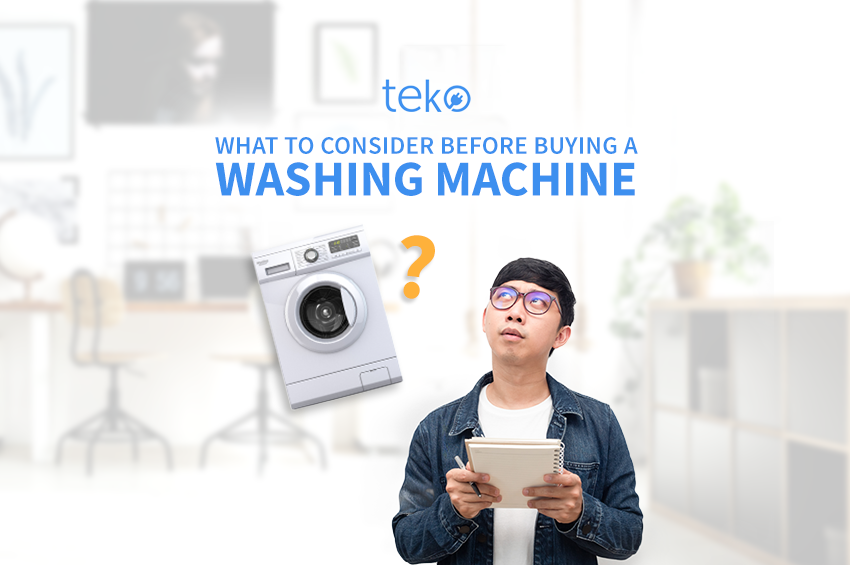
A washing machine is a key appliance in any household. It can save time, money, and energy by allowing you to quickly and easily clean your clothes with minimal effort. But how do you choose the right type? We’re Teko.ph, the largest aircon and appliance services provider in the Philippines, and we’ve got you a guide for your next big purchase.
1. Capacity
The capacity of a washing machine tub is determined by its size and is usually measured in kilograms. Families with kids who need to do numerous loads of laundry every day may prefer a large-capacity washer. Singles and couples with no kids may find smaller versions better because those consume less water and electricity.
Capacity suggestions:
1-2 person family: 7-8 kg
3-4 person family: 9-10kg
Families with more than four people: 11-14kg
2. Space
A washing machine is intended to make your life easier. But if it becomes a nuisance in your home because it takes up too much space and irritates the people in it, then the added stress makes owning one counter-productive.
This is why before buying a washing machine, make sure to have a dedicated space that is adequate to store it. Don’t rely on estimates, either. Take a tape measure and really measure that space. When you’re done with that, compare your measurements with the dimensions of the washing machine models you’re considering.
3. Type
As mentioned above, there are several types of washing machines, and choosing the right one comes down to budget, intended use, added features, and maybe aesthetics.
If you have limited space and need to run many washes at once, a front-load washing machine is an ideal choice. It usually comes in two versions: with and without a dryer. For those wishing to save time, the one with a dryer is a great option.
A number of washing machine manufacturers also have hot water and steam options. The high temperature will aid the cycle option in breaking down stains more efficiently. This feature may cost more energy, though.
Another critical element of a front-load washing machine is the clever inverter motor. In general, the inverter technology adjusts the speed according to the load. This contributes to energy efficiency and conservation.
Top-load washers, on the other hand, have shorter cycle durations and are much less expensive to acquire and maintain. This machine typically has a simple control panel that you can use to pick the types of cycles you want, and it’s a no-brainer to use.
The most prevalent form of the top-load washer is the fully automated one. A fully automatic washer takes the least amount of human work because it simply involves pressing a button to do your washing.
Doing laundry using a semi-automatic top-load washing machine, on the other hand, necessitates some manual involvement. The device has two tubs: one for washing and the other for drying.
The final conclusion is that none is much better than the other; it all depends on your own needs and tastes.
Conclusion
A washing machine is a significant investment, which is why it pays to know all the factors which will affect your purchase. Reading about them here should save you some money down the road, as this knowledge should permit you to get the washer that will most suit your needs. Still unsure? Our Ultimate Guide to Washing Machines might be of help!
